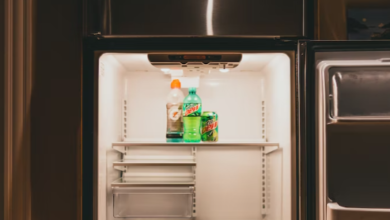Youth Depression, Suicide Increasing During Pandemic Response
Government policies meant to curtail the COVID-19 pandemic have resulted in unintended consequences that threaten lives—including, tragically, the lives of young people who are generally spared from the worst effects of COVID-19.
School closures, stay-at-home orders, and shutdowns of businesses deemed “non-essential” are contributing to surging rates of depression and suicide among young people, as well as rising incidences of drug overdoses and related deaths.
The New York Times reported this week that an alarming increase in student suicides has prompted schools in Las Vegas to move quickly to reopen schools for in-person learning. In the Clark County, Nevada school district, 18 students took their lives during the nine months of school closures, which is double the number of students who committed suicide in the district in all of 2019. The youngest child was just nine years old.
According to the Times: “One student left a note saying he had nothing to look forward to.”
Rising Youth Despair
Youth despair amid lockdowns and related public health orders appears to be worsening. While US aggregate suicide data for 2020 won’t be available for a couple of years, due to reporting lags, state and county level data reveal dismal trends. In Pima County, Arizona suicides were up 67 percent in 2020 compared to the previous year for children ages 12 to 17, and statewide childhood suicides had also increased since 2019. West Virginia has seen a spike in student suicide attempts during the pandemic. Parts of Wisconsin reported skyrocketing suicide rates among young people in 2020, while hospitals in Texas and North Carolina are seeing more young suicidal patients.
CDC data show a 24 percent increase in emergency room mental health visits for children ages 5 to 11, compared to 2019. Among adolescents ages 12 to 17, that increase is 31 percent. Last summer, the CDC reported that one in four young adults had contemplated suicide in the previous month.
Childhood and adolescent mental health has been deteriorating over the past decade, with youth depression and suicide rates climbing. But the isolation and hopelessness brought on by the pandemic response has exacerbated this trend. Earlier this month, a high school student and football star in Illinois, who had struggled previously with depression, committed suicide. His father says that his son’s “depression worsened significantly after Covid hit.”
Another high schooler and football player in Maine, Spencer Smith, took his own life last month after leaving a note saying that he felt locked in his house and the peer separation with remote learning was too much for him to bear any longer. “The kids need their peers more than ever now,” his father, Jay Smith, said. “They need face-to-face contact so they can let their emotions out.”
A Holistic Approach to Public Health
Some researchers recognized early on in the pandemic that there would be significant unintended consequences of lockdowns and government orders, warning of high mental health costs and other declines in public health. “The COVID-19 crisis may increase suicide rates during and after the pandemic,” noted a June 2020 paper in QJM: An International Journal of Medicine. “Mental health consequences of the COVID-19 crisis including suicidal behavior are likely to be present for a long time and peak later than the actual pandemic.”
Later, the authors of the Great Barrington Declaration, a document that urges a “focused protection” response to COVID-19 rather than universally restrictive pandemic policies, explained that public health policy must look at all aspects of public health—not just one virus and not just near-term effects.
Harvard University biostatistician, Martin Kulldorff, told The Wall Street Journal that “you can’t just look at COVID, you have to look holistically at health and consider the collateral damage.” One of the authors of the Great Barrington Declaration, Kulldorff adds: “You can’t just look short-term.”
What Kulldorff and other public health researchers expose is the fact that there are tradeoffs to any policy. “If it saves just one life,” a mantra echoed during the COVID response as a rallying cry for lockdowns, fails to acknowledge the lives damaged or lost due to these lockdown policies. Lockdown harms and deaths are as real as COVID harms and deaths and should be taken seriously when considering a holistic pandemic response.
Economists scrutinize tradeoffs, and many have been highlighting COVID-related tradeoffs since last spring. As FEE’s Antony Davies and James Harrigan wrote in April: “Regardless of whether we acknowledge them, tradeoffs exist. And acknowledging tradeoffs is an important part of constructing sound policy.”
This basic economic principle was beautifully articulated by Henry Hazlitt in his classic book, Economics in One Lesson:
The art of economics consists in looking not merely at the immediate but at the longer effects of any act or policy; it consists in tracing the consequences of that policy not merely for one group but for all groups.
Nine-tenths of the economic fallacies that are working such dreadful harm in the world today are the result of ignoring this lesson. Those fallacies all stem from one of two central fallacies, or both: that of looking only at the immediate consequences of an act or proposal, and that of looking at the consequences only for a particular group to the neglect of other groups.
As data on the unintended consequences of pandemic policy becomes gloomier, policy makers are beginning to acknowledge tradeoffs. School reopenings in Las Vegas are one positive sign of this policy shift, but more needs to be done to loosen harmful pandemic restrictions and allow for social and economic life to rebound.
The justification for the widespread lockdowns and pandemic restrictions enacted since last spring was to save lives, but it’s becoming increasingly clear that these mandatory measures are costing lives and may be ineffective at slowing the spread of the coronavirus.
This is particularly important now as more research shows that the harms of lockdowns and related policies may outweigh their benefits. A new peer-reviewed study in the European Journal of Clinical Investigation finds that restrictive, mandatory policies may not be any more effective at controlling the spread of the coronavirus than more voluntary measures.
“We do not question the role of all public health interventions, or of coordinated communications about the epidemic, but we fail to find an additional benefit of stay-at-home orders and business closures,” the researchers conclude.
There is no perfect policy response to a pandemic, but acknowledging tradeoffs, examining consequences across groups and over time, and advocating for a more voluntary, decentralized approach can minimize human costs and maximize overall health and well-being.
This article was originally published on FEE.org



